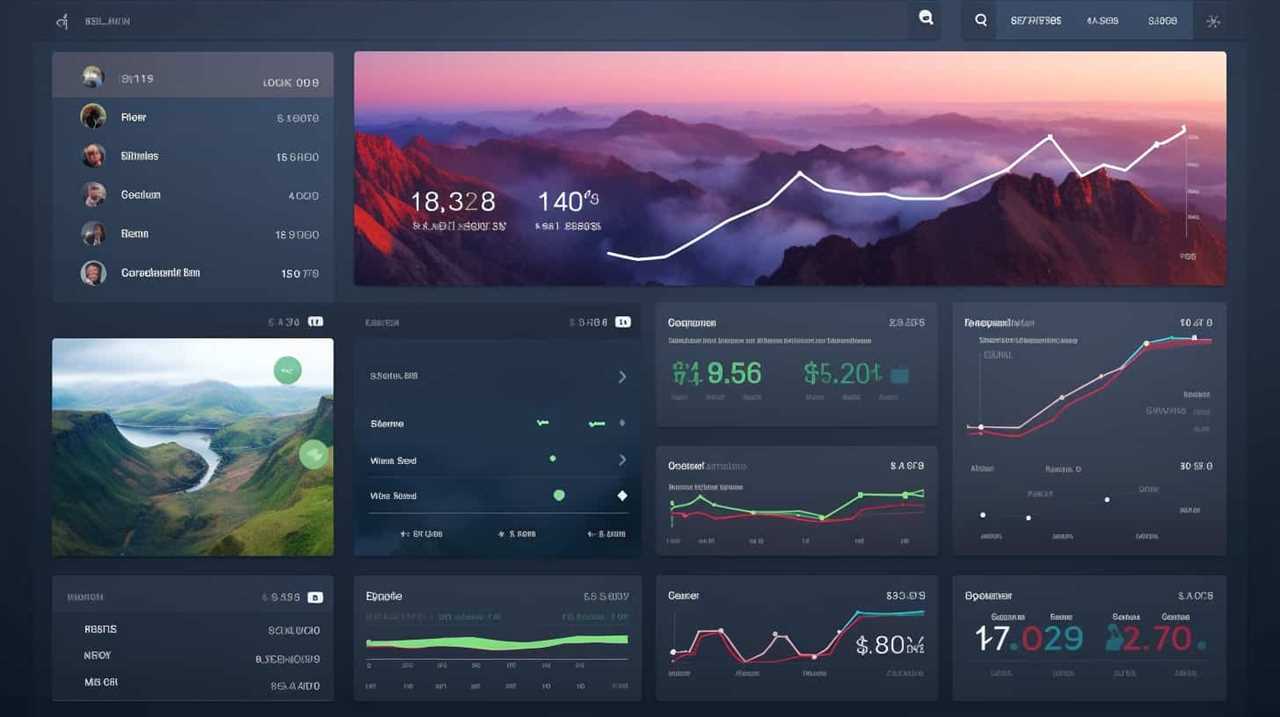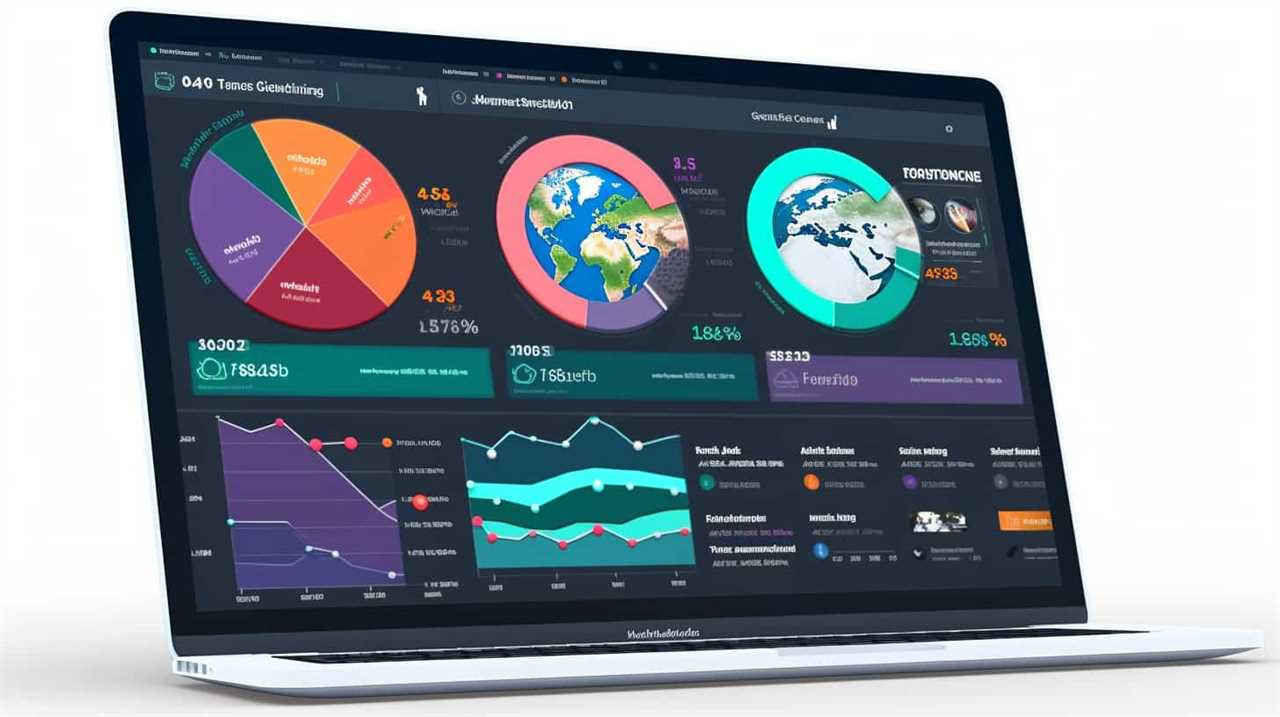Do you feel frustrated by creating content that goes unnoticed? We understand how disheartening that can be. But don’t give up just yet, as we have 15 innovative strategies to enhance the search engine optimization of your creative content.
From mastering keyword research to crafting engaging titles, we’ll show you how to make your content shine in the eyes of search engines.
Get ready to take your content to the next level and dominate the rankings.
Let’s dive in!

Key Takeaways
- Incorporate relevant and engaging titles with strategic keyword placement.
- Optimize meta descriptions and content with target keywords for improved search engine understanding.
- Enhance website loading speed through various optimization techniques.
- Focus on user experience and promotion through content structure, mobile optimization, and social media engagement.
Understand Keyword Research
We strongly believe that understanding keyword research is crucial for optimizing creative content for SEO.
Keyword analysis and competitive research are two essential components of this process.
Keyword analysis involves identifying the right keywords and phrases that are relevant to your content and have high search volume. This helps to attract the right audience to your website.
Competitive research, on the other hand, involves analyzing the keywords that your competitors are targeting and understanding their strategies. This allows you to identify gaps and opportunities in the market and create content that can outrank your competition.

By conducting thorough keyword analysis and competitive research, you can ensure that your creative content is optimized for maximum visibility and organic traffic.
Now, let’s move on to the next section where we’ll discuss the importance of using relevant and engaging titles.
Use Relevant and Engaging Titles
When it comes to optimizing creative content for SEO, one of the most crucial aspects is using relevant and engaging titles.
The length of the title plays a significant role in attracting readers, so it’s important to strike a balance between being concise and informative.

Additionally, incorporating relevant keywords into the title can help improve visibility in search engine results.
Ultimately, finding the right blend of creativity and SEO optimization can make a significant impact on the success of your content.
Title Length Importance
To optimize creative content for SEO, it’s crucial to prioritize the importance of title length by using relevant and engaging titles.
The length of your title plays a significant role in improving SEO ranking and attracting more organic traffic to your website.

A well-crafted title should be concise, yet descriptive enough to entice readers and search engines.
It should contain relevant keywords that are strategically placed to capture the attention of your target audience.
A title that’s too short may not provide enough context, while a title that’s too long can be overwhelming and get cut off in search results.
Keywords in Titles
In the context of optimizing creative content for SEO, incorporating relevant and engaging titles is crucial for increasing organic traffic to your website. When it comes to title optimization, there are a few key strategies to keep in mind:

- Conduct thorough keyword research to identify the most relevant and high-performing keywords for your content.
- Place your primary keyword at the beginning of your title to maximize its impact.
- Use action verbs and power words to make your titles more compelling and enticing.
- Keep your titles concise and clear, aiming for a length of 50-60 characters to ensure they display properly in search engine results.
- Test different variations of your titles to see which ones resonate the most with your target audience.
Balancing Creativity and SEO
Now that we’ve discussed the importance of incorporating relevant and engaging titles in optimizing creative content for SEO, how can we effectively balance creativity and SEO while using these titles?
Balancing creativity and SEO requires using creative content strategies that are also SEO friendly. One way to achieve this balance is by conducting keyword research to identify relevant and high-ranking keywords that can be incorporated into the titles.
By strategically placing these keywords in the titles, we can ensure that our creative content is optimized for search engines while still maintaining its creativity and engagement.
Additionally, it’s important to write titles that accurately reflect the content of the page, as this helps both search engines and users understand what the page is about.

Optimize Meta Descriptions
Our strategy for optimizing meta descriptions involves using compelling copy to entice users and improve click-through rates. A well-crafted meta description not only provides a concise summary of the page content but also entices users to click on the search result.
Here are some best practices for optimizing meta descriptions:
- Keep it concise: Stick to around 150 characters to ensure your description isn’t truncated in search results.
- Use keywords strategically: Incorporate relevant keywords naturally to improve search visibility.
- Highlight unique value: Showcase the unique features or benefits of your content to differentiate it from competitors.
- Create a call-to-action: Encourage users to take action by including phrases like ‘Learn more’ or ‘Discover now.’
- Test and refine: Continuously monitor your click-through rates and experiment with different variations to find the most effective meta description.
Incorporate Target Keywords Strategically
When it comes to incorporating target keywords strategically, there are a few key techniques to keep in mind.
Firstly, consider the placement of your keywords throughout your content, ensuring they appear in important areas such as headings, titles, and the first paragraph.

However, it’s important to balance keyword usage with natural language, as keyword stuffing can harm your SEO efforts.
Keyword Placement Techniques
We strategically incorporate target keywords in our creative content using effective keyword placement techniques. By strategically placing keywords throughout our content, we can improve our keyword density and increase our chances of ranking higher in search engine results.
Here are five keyword placement techniques that we employ to optimize our content for SEO:
- Incorporating keywords in the headline: We make sure to include our target keywords in the headline to signal to search engines what our content is about.
- Using keywords in the introduction: We introduce our target keywords early on in the content to give search engines a clear understanding of the topic.
- Sprinkling keywords throughout the content: We strategically scatter our target keywords throughout the content, ensuring they’re relevant and flow naturally within the context.
- Including keywords in subheadings: We use subheadings to break up our content and include our target keywords in them to further highlight the topic.
- Using long tail keywords: We incorporate long tail keywords, which are more specific and have lower competition, to attract targeted traffic and improve our chances of ranking higher.
Balancing Keywords Naturally
To ensure a natural balance of keywords in our creative content, how can we strategically incorporate target keywords while maintaining readability and user experience?

One effective way is to focus on keyword density. By analyzing the percentage of target keywords compared to the total word count, we can ensure that our content remains optimized without sounding forced or unnatural.
However, it’s important to remember that readability and user experience should always be prioritized. To achieve this, we can utilize natural language processing techniques. This involves using variations of our target keywords and incorporating them seamlessly into our content.
By doing so, we can maintain a high level of readability while still optimizing our content for search engines.
Striking the right balance between incorporating target keywords strategically and providing a positive user experience is key to optimizing creative content for SEO.

Effective Keyword Integration
One way we can effectively incorporate target keywords while maintaining readability and user experience is by strategically integrating them throughout the content.
- Conducting effective keyword research: Before incorporating keywords into our content, it’s essential to conduct thorough keyword research. This helps us identify relevant keywords with high search volumes and low competition.
- Optimizing content length: It’s crucial to strike a balance between providing valuable information and keeping our content concise. By optimizing the length of our content, we can ensure that it isn’t overwhelming for readers while still providing enough depth to address their needs.
- Utilizing headings and subheadings: Incorporating target keywords in headings and subheadings not only helps with SEO but also improves the readability of our content.
- Including keywords in the introduction and conclusion: Placing target keywords strategically in the introduction and conclusion of our content helps search engines understand the context and relevance of our content.
- Using keywords naturally within the body: While it’s important to include target keywords throughout the content, it’s equally important to use them in a natural and organic manner that enhances the flow and readability of our writing.
Create Unique and Valuable Content
When aiming to optimize creative content for SEO, it’s crucial to craft content that’s both unique and valuable to users.
Creating engaging content is essential in capturing the attention of your target audience and keeping them on your website for longer periods. By providing valuable information, insights, or entertainment, you establish your expertise and build trust with your readers.
Moreover, the importance of originality can’t be overstated. Search engines favor unique content, as it adds value to their users and sets you apart from your competitors.

To ensure your content is both unique and valuable, conduct thorough research on your topic, present fresh perspectives, and provide actionable takeaways.
Optimize Image Alt Tags
When it comes to optimizing our creative content for SEO, one important aspect to consider is the optimization of image alt tags. Alt tags play a crucial role in helping search engines understand what our images are about, so it’s essential to choose relevant keywords that accurately describe the image.
Additionally, we should aim to make our alt tags descriptive and concise, providing a clear and concise summary of the image’s content.
Importance of Alt Tags
Our team understands the importance of optimizing image alt tags for SEO. Alt tags, also known as alternative text, are HTML attributes that describe the content of an image. These tags play a crucial role in improving the accessibility and visibility of your website.

Here are five reasons why alt tags are essential for optimizing images:
- Improved SEO: Alt tags provide search engines with valuable information about your images, helping them understand your content better and potentially improving your search engine rankings.
- Enhanced User Experience: Alt tags assist visually impaired users who rely on screen readers to understand the images on your website.
- Increased Web Traffic: Optimized alt tags can drive organic traffic to your website through image search results.
- Reduced Bounce Rates: Relevant alt tags ensure that visitors find the information they’re looking for, reducing the likelihood of them leaving your site immediately.
- Compliance with Web Standards: Including alt tags in your images helps you meet accessibility guidelines and ensures your website is accessible to all users.
Choosing Relevant Keywords
To optimize image alt tags for SEO, we focus on choosing relevant keywords. Selecting the right keywords is crucial for improving the visibility of your content in search engine results.
Start by conducting thorough keyword research using various techniques such as analyzing search volume, competition, and relevance to your target audience. Consider long-tail keywords, as they tend to be more specific and have less competition.
Additionally, optimize your content for voice search by incorporating conversational phrases and natural language. With the rise of voice assistants like Siri and Alexa, it’s important to adapt your content to cater to voice search queries.

Descriptive and Concise
Optimizing image alt tags requires using descriptive and concise language. When it comes to SEO, the way we label our images can greatly impact our search rankings. Here are some tips for optimizing image alt tags effectively:
- Use descriptive keywords: Incorporate relevant keywords that accurately describe the image content.
- Be concise: Keep the alt tag brief and to the point, while still conveying the image’s context.
- Prioritize user intent: Consider the user’s search intent and optimize alt tags accordingly.
- Provide context: Use alt tags to give additional information about the image, helping users and search engines understand its purpose.
- Optimize for accessibility: Alt tags are crucial for visually impaired users, so make sure they accurately describe the image for screen readers.
Use Header Tags Effectively
When using header tags effectively, we can enhance the SEO optimization of our creative content. Header tag optimization plays a crucial role in making our content more SEO friendly and improving its visibility on search engine result pages (SERPs).
To utilize header tags effectively, it’s important to strategically incorporate relevant keywords that align with our content and target audience’s search intent. By using H1 tags for main headings and H2-H6 tags for subheadings, we can create a clear and organized structure for our content, making it easier for search engines to understand and index.
Additionally, header tags provide a hierarchy that helps readers navigate through our content, improving the overall user experience. Thus, by using header tags effectively, we can optimize our creative content for SEO and increase its chances of ranking higher in search results.

Improve Website Loading Speed
When it comes to optimizing website loading speed, there are several key techniques that we can implement.
One important aspect is using caching and compression techniques to reduce the size of files and improve load times.
Another strategy is minimizing JavaScript and CSS, which can help streamline the code and enhance performance.
Additionally, optimizing images by compressing them and using proper file formats can significantly improve website loading speed.

Caching and Compression Techniques
One important technique to consider for improving website loading speed is implementing caching and compression. These techniques optimize the performance of your website by reducing the amount of data that needs to be transferred between the server and the user’s browser.
Here are five important caching and compression techniques to help improve your website’s loading speed:
- Utilize browser caching to store static resources like images, CSS, and JavaScript files locally on the user’s device.
- Enable server-side caching to generate cached versions of your web pages, reducing the processing time required to serve them to users.
- Implement file compression techniques like Gzip or Brotli to reduce the size of your website’s files, making them faster to load.
- Leverage content delivery networks (CDNs) to distribute your website’s assets across multiple servers, improving loading times for users in different locations.
- Minify and combine your CSS and JavaScript files to reduce the number of HTTP requests and improve loading speed.
By implementing these caching and compression techniques, you can significantly enhance your website’s loading speed and provide a better user experience.
Now, let’s explore the next topic: minimizing JavaScript and CSS.

Minimizing JavaScript and CSS
To improve website loading speed, we can minimize JavaScript and CSS.
By minimizing file sizes and reducing code complexity, we can significantly enhance the performance of our website.
Minimizing JavaScript involves removing unnecessary code, eliminating duplicate functions, and combining multiple scripts into one file. This not only reduces the file size but also decreases the number of HTTP requests, resulting in faster loading times.
Similarly, minimizing CSS involves removing unused styles, optimizing selectors, and compressing the code. This helps reduce the amount of data that needs to be downloaded, ultimately improving the loading speed of our webpages.

By implementing these techniques, we can ensure a seamless user experience and enhance our website’s SEO.
Now let’s move on to the next section about image optimization for speed.
Image Optimization for Speed
In order to further improve website loading speed, we can optimize images to reduce their file sizes and enhance performance. This can be achieved through image compression techniques and implementing responsive design practices.
Here are some tips for optimizing images for speed:

- Use the correct file format: Choose the appropriate format such as JPEG for photographs and PNG for graphics.
- Resize images: Scale down the dimensions of the images to match the required display size.
- Compress images: Reduce the file size without compromising on image quality using tools like TinyPNG or JPEGmini.
- Lazy loading: Implement lazy loading to load images only when they’re visible on the screen.
- Use CSS sprites: Combine multiple images into one to reduce HTTP requests.
Optimize URL Structure
We recommend optimizing the URL structure to improve SEO for creative content. URL structure optimization plays a crucial role in increasing keyword density and enhancing search engine visibility.
When optimizing URLs, it’s important to ensure they’re concise, descriptive, and include relevant keywords. This helps search engines understand the content of the page and improves its chances of ranking higher in search results.
A well-structured URL also enhances user experience, making it easier for visitors to navigate your website.
To optimize your URL structure, consider removing unnecessary characters, using hyphens to separate words, and keeping URLs short and meaningful.

Utilize Internal Linking
By incorporating internal linking, we can effectively enhance the SEO performance of creative content. Internal linking refers to the practice of linking one page of a website to another page within the same domain. This strategy not only helps search engines understand the structure and hierarchy of your website but also improves user experience by guiding them to relevant and related content.
Here are some internal linking strategies to optimize your creative content:
- Use descriptive anchor text: When creating internal links, use relevant keywords in the anchor text to provide context and improve SEO.
- Link to relevant pages: Ensure that the linked pages are related to the current content, as this helps search engines understand the topic and relevance.
- Prioritize deep linking: Instead of only linking to your homepage, distribute internal links throughout your website to improve the visibility of all pages.
- Update and maintain your internal links: Regularly check and update your internal links to ensure they’re still valid and lead to the intended pages.
- Create a logical site structure: Organize your website in a hierarchical manner, with clear categories and subcategories, to make it easier for search engines to crawl and index your content.
Enhance User Experience and Readability
To optimize user experience and readability, it’s important to focus on enhancing the structure and formatting of your creative content.
By improving readability, you can increase user engagement and make your content more appealing to your target audience.

One way to improve readability is by using headings and subheadings to break up your content into smaller, easily digestible sections. This helps readers navigate through your content and find the information they need more efficiently.
Additionally, using bullet points and numbered lists can make your content more organized and scannable.
Another important aspect of enhancing user experience is by using clear and concise language. Avoid using jargon or complex terms that might confuse your readers. Instead, use simple and straightforward language that’s easy to understand.
Optimize for Mobile Devices
When optimizing creative content for SEO, it’s crucial to ensure that it’s optimized for mobile devices. With the increasing number of people accessing the internet through their smartphones and tablets, mobile optimization has become a necessity.

Here are some key considerations for optimizing your content for mobile devices:
- Responsive Design: Create a website that adapts to different screen sizes and resolutions, providing a seamless user experience across devices.
- Fast Loading Speed: Mobile users tend to have shorter attention spans, so optimize your website for quick loading to prevent users from bouncing.
- Clear and Concise Content: Mobile screens are smaller, so make sure your content is concise, easy to read, and visually appealing.
- Simple Navigation: Use clear and intuitive navigation menus to help users easily find the information they need.
- Mobile-Friendly Forms: Streamline your forms by using auto-fill, drop-down menus, and other mobile-friendly features for a smooth user experience.
Implement Schema Markup
Now let’s delve into the next step of optimizing creative content for SEO: implementing schema markup, which enhances the visibility and understanding of your website’s information by search engines.
Schema markup implementation is a crucial aspect of SEO that helps search engines better understand the content on your website and display it in a more informative and visually appealing way in search results.
By adding schema markup, you can provide additional context to your content, such as the type of content, author information, ratings, and more. This not only improves your website’s chances of ranking higher in search results but also increases the likelihood of attracting more qualified traffic.

To ensure effective implementation of schema markup, it’s important to follow best practices for schema markup, such as using the correct schema types, structuring the data correctly, and regularly testing and monitoring the markup for any errors or issues.
By implementing schema markup, you can significantly enhance your website’s visibility and improve its performance in search engine rankings.
Now, let’s move on to the next step: leveraging social media for content promotion.
Leverage Social Media for Content Promotion
Now, let’s explore how we can effectively leverage social media to promote our creative content and further enhance its visibility and reach.

Here are five strategies to optimize social media engagement and drive traffic to our content:
- Develop a comprehensive social media strategy that aligns with our goals and target audience.
- Create compelling and shareable content that resonates with our audience and encourages them to engage and share.
- Utilize relevant hashtags to increase the visibility of our content and attract a wider audience.
- Engage with our followers by responding to comments and messages promptly, fostering a sense of community and encouraging further engagement.
- Collaborate with influencers in our industry to amplify our reach and tap into their established audience.
Monitor and Analyze SEO Performance
To effectively monitor and analyze SEO performance, we can utilize various tools and techniques.
Monitoring and analyzing SEO performance is crucial for understanding how well our content is performing in search engine rankings. By tracking key metrics such as organic traffic, keyword rankings, and conversion rates, we can gain valuable insights into the effectiveness of our SEO strategies.
One important aspect of monitoring SEO performance is effective keyword integration. By analyzing keyword performance, we can identify which keywords are driving the most traffic and conversions, and make adjustments to our content accordingly. This helps us optimize our content for better search engine visibility and higher organic rankings.

Additionally, monitoring SEO performance allows us to identify any issues or areas for improvement, ensuring that we continuously optimize our content and stay ahead of the competition.
Frequently Asked Questions
How Can I Improve the Loading Speed of My Website?
Improving website loading speed is crucial. We use techniques like caching, optimizing images, and minimizing code to increase speed. These improvements enhance user experience and boost SEO rankings.
What Is Schema Markup and How Can It Be Implemented?
Implementing schema markup on a website has numerous benefits. It helps search engines understand and display content more effectively, improving visibility and increasing click-through rates. We can guide you through the process of schema markup implementation.
How Do I Optimize My Content for Mobile Devices?
To optimize our content for mobile devices, we focus on mobile friendly design and responsive web design. By ensuring our website adapts seamlessly to different screen sizes, we provide a user-friendly experience that drives engagement and boosts SEO rankings.

What Are Some Ways to Enhance User Experience and Readability?
Improving accessibility and enhancing visual appeal are key to enhancing user experience and readability. By incorporating these strategies, we can optimize creative content for SEO and create a more engaging and mastery-focused audience experience.
How Can Social Media Be Leveraged for Content Promotion?
To optimize content promotion, we leverage social media engagement and influencer partnerships. By strategically utilizing these channels, we can amplify our message, reach a wider audience, and enhance brand visibility.
What Are the Best SEO Strategies for Optimizing Creative Content?
When it comes to optimizing creative content, incorporating the best ways to optimize creative content is essential for effective SEO. This includes conducting thorough keyword research to target relevant phrases, optimizing meta tags and headings, ensuring proper URL structure, and creating engaging and shareable content. Incorporating backlinks from authoritative sources and promoting content through social media platforms are also integral parts of a successful SEO strategy. By employing these techniques, you can enhance your website’s visibility and drive organic traffic.
Conclusion
In our quest to optimize creative content for SEO, we’ve uncovered the keys to unlocking success.
By understanding keyword research, creating unique and valuable content, and optimizing for mobile devices, we’ve paved the way for higher rankings and increased visibility.

With a touch of social media magic and the power of analytics, we can now soar to new heights.
So let’s embrace these strategies, spread our wings, and watch our content soar to the top of the search engine skies.









